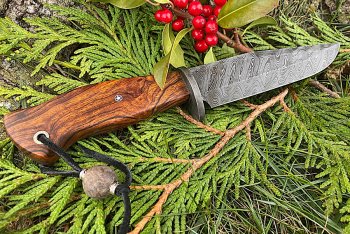Mark Barone
Well-Known Member
Maybe a preference, but what thickness leather should I order to make my KITH sheath. I can only find the thin stuff in the stores around here? I never made a leather sheath before.
Also I forgot what you call the small piece of leather between the two pieces. To protect the stitching.
Typically a welt is the same thickness but some sheath builds require a step welt to accept the thicker handle.Lots of good tips , thanks. Also I forgot what you call the small piece of leather between the two pieces. To protect the stitching. Just curious, does that have to be the same thickness or can I use a thinner piece than the sheath leather itself?
That makes sense but seems like a lot of extra work. For a knife that only has the blade in the sheath it will most likely have a retention strap.I can't remember who I learned it from, but I sand my welts to match the thickness of the spine of the knife. This helps the sheath hold the knife tighter.

That makes sense but seems like a lot of extra work. For a knife that only has the blade in the sheath it will most likely have a retention strap.
But that works for me. Your method definitely adds the custom touch though!
